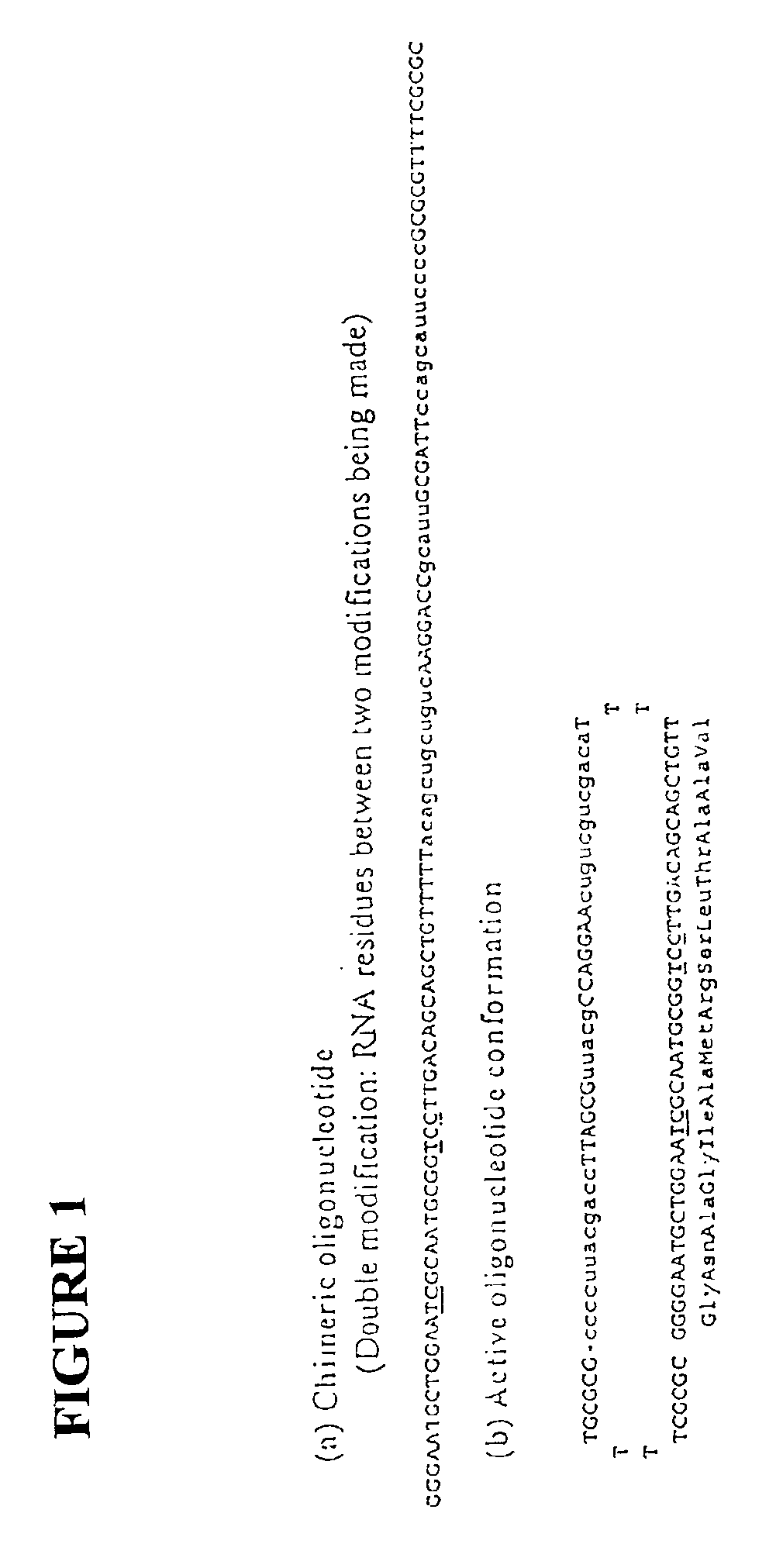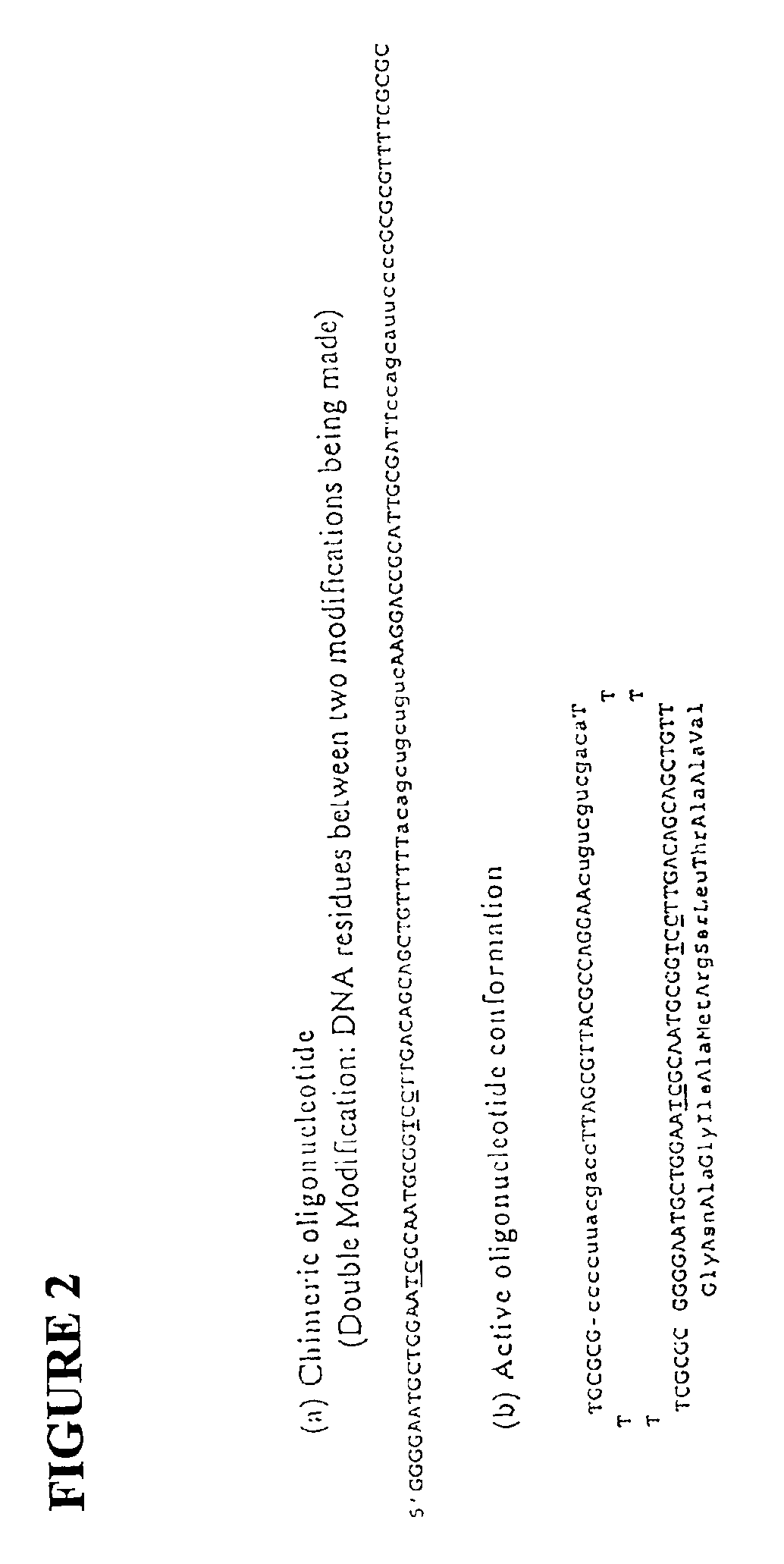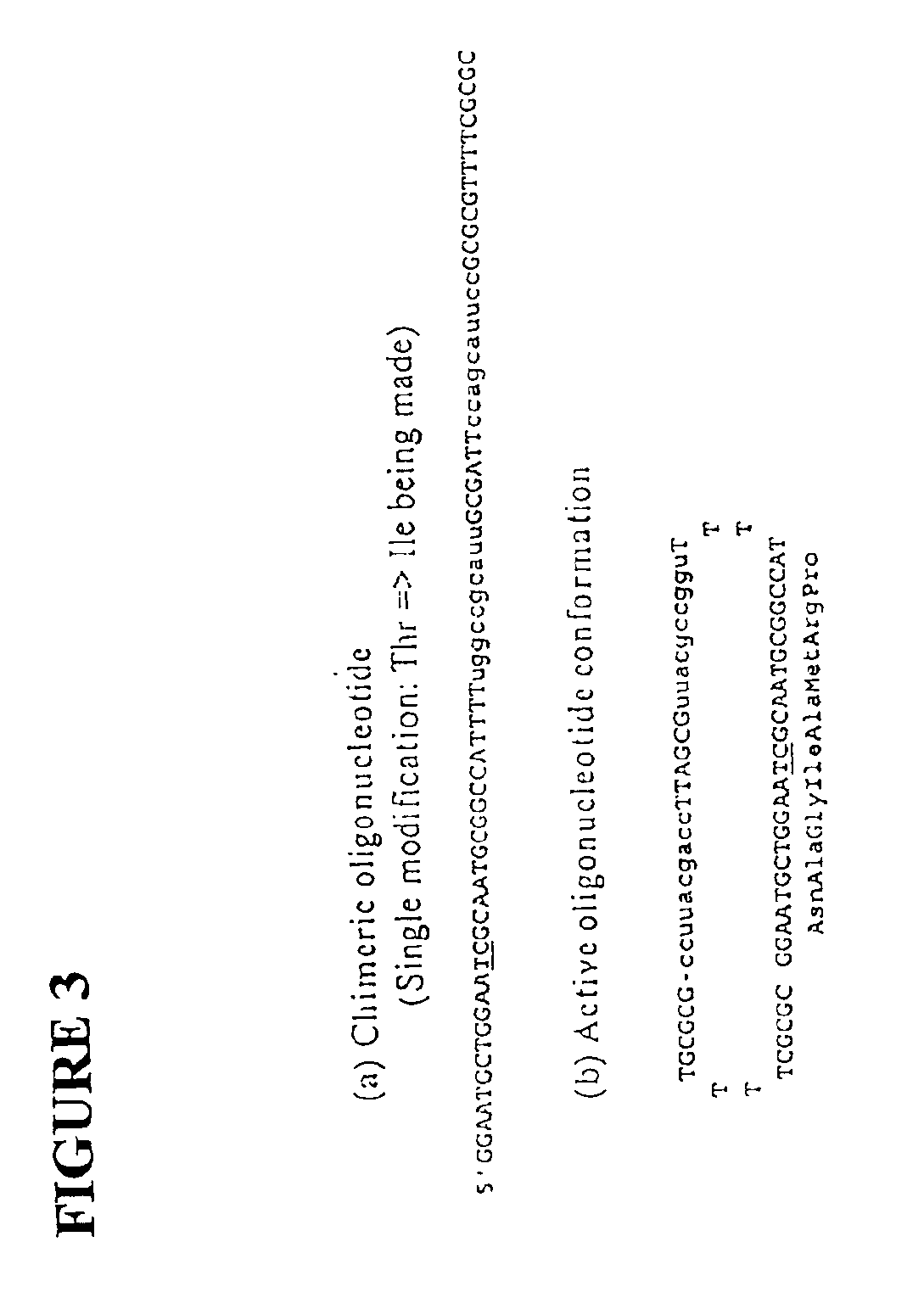Targeted manipulation of genes in plants
a technology of plant genes and target genes, applied in the field of higher plant genes, can solve the problems of system drawbacks, system suffer from lack of genomic targeting control, and the system remains ineffective in transforming agrobacterium into agrobacterium
- Summary
- Abstract
- Description
- Claims
- Application Information
AI Technical Summary
Benefits of technology
Problems solved by technology
Method used
Image
Examples
example 1
Design of Chimeric Oligonucleotides
[0045]N-phosphonomethylglycine, also known by its common name glyphosate is widely used as a herbicide. Herbicide tolerant plants have been constructed by utilizing EPSPS genes which are capable of conferring tolerance to a plant. In these instances, glyphosate resistance genes are recovered and utilized to transform plant cells and regenerated plants obtained which are glyphosate resistant. A glyphosate resistant gene has been published carrying double mutations. See, WO 97 / 04103, herein incorporated by reference. The publication describes the transformation of tobacco with the mutant form of the gene.
[0046]The mutant form of the gene conferring glyphosate resistance can be created utilizing the targeted gene correction method described herein. Two chimeric oligonucleotides are designed as a single molecule with two sequences that are inverted and complementary, capable of folding back on itself to form a duplex structure. One form of the molecule...
example 2
Materials and Methods
[0092]Transformation vectors—The plasmid pPHP10247 contains the in vitro mutagenized maize AHAS gene encoding the Ser621 Asn mutant form of AHAS. This gene is under the control of the 2.0 kb maize Ubiquitin-1 promoter (bases −899 to +1093, Christensen et al. (1992) Plant Mol. Biol. 18:675-689) and a 280 bp fragment containing the nopaline synthase polyadenylation signal (Bevan et al. (1983) Nucl. Acids Res. 11:369-385). The plasmid pPHP12322 contains the maize Ubiquitin-1 promoter driven, in vitro mutagenized maize AHAS gene which encodes the Pro165A1a mutant form of AHAS. The plasmid used to confer resistance to the herbicide bialaphos, pPHP3528, consists of an enhanced CaMV35A promoter (bases −421 to −90 and −421 to +2, Gardner et al. (1981) Nucl. Acids Res. 9:2871-2888), a 79 bp fragment from the 5′ leader sequence of tobacco mosaic virus (Gallie et al. (1987) Nucl. Acids Res. 15:3257-3273), the first intron of the maize ADH1-S gene (Dennis et al. (1984) Nucl...
PUM
| Property | Measurement | Unit |
|---|---|---|
| pH | aaaaa | aaaaa |
| total volume | aaaaa | aaaaa |
| total volume | aaaaa | aaaaa |
Abstract
Description
Claims
Application Information
 Login to View More
Login to View More - R&D
- Intellectual Property
- Life Sciences
- Materials
- Tech Scout
- Unparalleled Data Quality
- Higher Quality Content
- 60% Fewer Hallucinations
Browse by: Latest US Patents, China's latest patents, Technical Efficacy Thesaurus, Application Domain, Technology Topic, Popular Technical Reports.
© 2025 PatSnap. All rights reserved.Legal|Privacy policy|Modern Slavery Act Transparency Statement|Sitemap|About US| Contact US: help@patsnap.com



